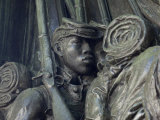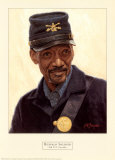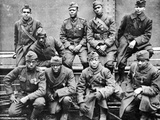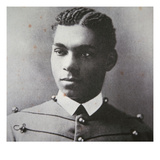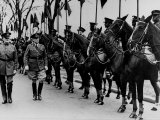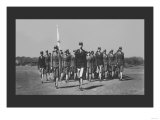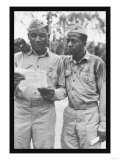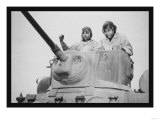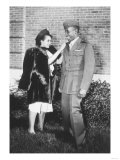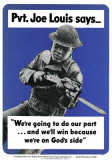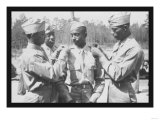|
|
|
|
|
|
|
BLACK HISTORY ECARDS
|
|
|
|
|
|
|
|
|
|
|
|
BOOKS ABOUT BLACK MILIATARY HISTORY
|
|
|
|
|
|
|
|
|
|
|
|
|
|
|
|
|
|
|
 |
|
|
|
|
|
|
|
Black Military History Posters
teaching resources on African American history for the classroom and home schoolers.
|
social studies > history > black history > MILITARY HISTORY
|
|
Cripus Attucks, Black Civil War units, Buffalo Soldiers, the Tuskegee Airmen and the 369th Infantry Regiment, Henry Ossian Flipper, Charles Young, Benjamin O Davis, Jr., and Colin Powell.
|
|
|
|
|
|
|
|
The Buffalo Soldiers
The Plains Indians nicknamed the black cavalrymen Buffalo Soldiers - a title the troopers proudly accepted. To be associated with the fighting spirit of the Indian's sacred buffalo was a measure of respect.
The Buffalo Soldiers consistently received some of the worst assignments the Army had to offer and repeatedly faced fierce prejudice. Despite this, the 9th and 10th Cavalries fought with great dedication and courage and developed into two of the most effective and distinguished fighting units in the Army.
• Buffalo Soldiers at Amazon.com
|
|
|
|
|
|
|
Henry Ossian Flipper
b. 3-21-1856; Thomasville, Georgia
d. 5-3-1940; Atlanta
Henry Ossian Flipper, a former slave, was the first Aftican American to graduate from the United States Military Academy at West Point (1877). He was assigned to A Troop and became the first non-white officer to lead Buffalo Soldiers of the 10th Cavalry. Though he served with competency and distinction during the Apache Wars and the Victorio Campaign he was court martialed and dismissed.
In 1976 a review of Flipper's court martial were found “unduly harsh and unjust”, recommending that his dismissal be changed to a good conduct discharge. An pardon was granted in 1999.
FYI ~ After leaving the Army Flipper worked as a civil engineer and as an assistant to the Secretary of the Interior.
|
|
|
|
Charles Young
b. 3-12-1864; Mayslick, KY
d. 1-8-1922; while on a reconnaissance mission in Nigeria
Charles Young was the third African American graduate of West Point, first black U.S. national park superintendent, first African American military attaché, and highest ranking black officer in the United States Army until his death in 1922 (Colonel).
|
|
|
|
General John “Black Jack” Pershing
b. 9-13-1860; Laclede, MO
d. 7-15-1948
Pershing, who lead the World War I American Expeditionary Force (AEF) and is considered the mentor of the US generals in the European Theatre of WWII, served as a teacher in rural Missouri before he attended West Point. His experience with African American children helped with racial issues when he commanded a racially diverse unit of soldiers.
• My Experiences in the World War by John Joseph Pershing
|
|
|
|
The Tuskegee Airmen
Poster Text (poster no longer available): Before the Air Force shattered the sound barrier, these airmen shattered the race barrier.
This distinguished group of black combat pilots trained at a segregated base in Tuskegee, Alabama. The Tuskegee Airmen flew more than 15,000 sorties in World War II, providing fighter escort to bombing missions over strategic targets in Europe. They never lost an escorted bomber to enemy fighers - an unsurpassed combat claim - and took home more than 150 Distinguished Flying Cross medals.
In March of 1942, five African American men earned the silver wings of military pilots at Tuskegee Army Air Field in Alabama. These men were the firs "Tuskegee Airmen," a group of black pilots who served wit hgreat distinction during World War II.
The War Department established a black fighter squadron only after great pressure from African American leaders and the press. Blinded by prejudice, many Americans of the time believed blacks could not fly airplanes. In early 1941, the Secretary of War reluctantly approved a plan that set up the first all-black squadron in the Army Air Corps. The plan included the construction of a training base at Tuskegee Institute, a historically black college. Yet even facilities at the Tuskegee Army Air Field, where the African American cadets were learning to fly, remained segregated. And all the commanding officers at Tuskegee were white. Thirteen young African American men made up the first class, but only five completed the hard training. After America entered World War II in December of 1941, black men applied for admission to the Army Air Corps in larger numbers than ever. Gradually, class sizes were increased at the Tuskegee air field. By the end of World War II in 1945, nearly a thousand African American pilots had trained at Tuskegee, and 450 of them had flown in combat.
In 1943, the first squadron of Tuskegee Airmen left for overseas duty. It was stationed in West Africa. The squadron was soon joined by three more squadrons of Tuskegee Airmen. At first, the job of America's small and fast fighter planes in World War Ii was to escort and protect the heavier and slower bombers. Later in the war, fighter planes were permitted to pursue enemy aircraft. In hundreds of escort missions over North Africa and Europe, the Tuskegee Airmen never lost a bomber. No other group in the Army Air Corps could make that claim Grateful bomber crews called the Tuskegee group the Red-Tail Angels because of the red markings on the tails of their aircraft.
The Red-Tail Angels also compiled an outstanding combat record. They participated in the D-Day operation, downing many German fighter planes in the days following the June 6, 1944, invasion of France. On June 25, 1944, two Tuskegee Airmen sank a German warship with machine gun fire. This was the first time a fighter aircraft had accomplished such a feat. During the war, the Tuskegee Airmen destroyed many enemy aircraft and damaged and destroyed a great number of enemy railroad cars, barges, boats, oil and ammunitions dumps, buildings, and factories. They earned 150 Distinguished Flying Crosses, a Legion of Merit, 744 Air Medals, eight Purple Hearts, two Soldier's Medals, and fourteen Bronze Stars. Sisty-six Tuskegee Airmen died in aerial combat and 32 more were shot down and captured as prisoners of war. After World War II, the black squadrons were deactivated. By 1947, the Army Air Corps had become the United States Air Force and had begun integrating its units. Some historians believe that the performance records of the Tuskegee Airmen helped bring an end to segregation in the military.
• Tuskegee Airmen at Amazon.com
• more Aviation posters
|
|
|
|
Benjamin O. Davis, Jr.
b. 12-18-1912; Wash. DC
d. 7-4-2002; Wash. DC
Benjamin Oliver Davis, Jr., a United States Air Force general, was the commander of the World War II Tuskegee Airmen and 4th African American graduate of West Point.
His father, Benjamin O. Davis, Sr. (1877-1970) was the first African American general in the US Army, serving as a Buffalo Soldier, in the Spanish-American War, and WWII.
• aviation posters
|
|
|
|
|
|
|
|
|
|
|
|
|
|
|
|
Colin Powell
b. 4-5-1937; Harlem, NYC
Colin Luther Powell retired as a four-star general in the United States Army. During his military career, Powell also served as National Security Advisor (1987–1989), as Commander-in-Chief, U.S. Army Forces Command (1989) and as Chairman of the Joint Chiefs of Staff (1989–1993), holding the latter position during the Gulf War. He was the first, and so far the only, African American to serve on the Joint Chiefs of Staff.
Powell was also the 65th United States Secretary of State (2001-2005), serving under President George W. Bush. He was the first African American appointed to that position.
|
|
|
|
|
|
|
|
|
|
|
|
previous page | top
|
|
I have searched the web for visual, text, and manipulative curriculum support materials - teaching posters, art prints, maps, charts, calendars, books and educational toys featuring famous people, places and events - to help teachers optimize their valuable time and budget.
Browsing the subject areas at NetPosterWorks.com is a learning experience where educators can plan context rich environments while comparing prices, special discounts, framing options and shipping from educational resources.
Thank you for starting your search for inspirational, motivational, and educational posters and learning materials at NetPosterWorks.com. If you need help please contact us.
|
|
|











